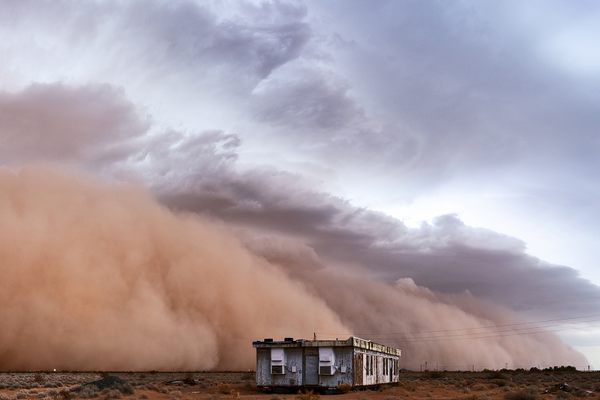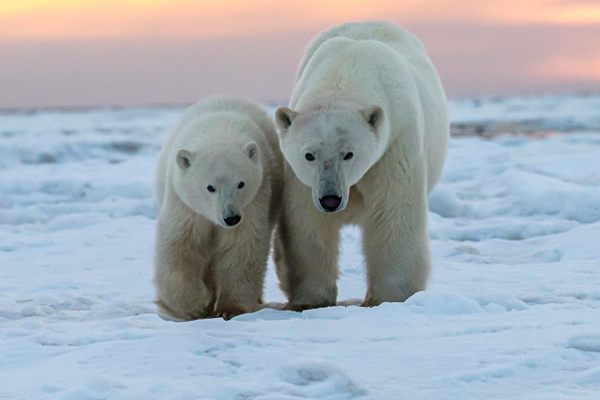The Incredibly Tricky Task of Measuring All Life on Earth
Humans make up just 0.01 percent of the biomass on the planet—the same as termites.

It’s hard to conduct a census of all of the living stuff scattered across Earth. The planet’s citizens—in the forms of tiny ocean bacteria, galloping mammals, or tangles of terrestrial plants—are found all over the place, from submarine fissures to craggy mountaintops. Many of these residents don’t answer their doorbells or respond to surveys, and they can be difficult to track down: Some spend their lives in realms most humans don’t see up close, and others are far too minuscule to be seen with the naked eye. You’ve got scores of prokaryotic neighbors you’ve never met.
Gauging exactly how much living stuff there is across the planet, and where, is an even trickier business. Most previous work in this vein has been limited to a single taxon—say, for instance, the distribution of microbes in ocean sediment. But researchers from Israel’s Weizmann Institute of Science and the California Institute of Technology recently took a stab at it. Their goal was to calculate the mass and broad-strokes distribution of every living thing across plants, animals, bacteria, and archaea.
To do it, they measured each taxon’s biomass—that is, the weight of all the carbon they contain. Getting there required a bit of contortion. First, they collated hundreds of studies, ranging from field observations to remote data collected by sensors or satellites. (Speaking to The Guardian, the lead author Ron Milo described the process as a “meta-meta-analysis.”) Where this wasn’t available, they estimated—first puzzling out the general population estimate, average weight, and then converting that into suspected biomass.
This biomass tactic, the researchers explain, allows them to compare taxa whose members are vastly different sizes (making it possible, for instance, to pit termites against elephants). It doesn’t account for numbers of members, or for the quantity of species within a particular taxon.

In the researchers’ accounting, newly published in the Proceedings of the National Academy of Sciences, all of this adds up to 550 gigatons of carbon. Plants are particular heavy-hitters, contributing about 80 percent of that biomass. Bacteria comprises a little less than 15 percent, and the remainder is shared among fungi, archaea, protists, animals, and viruses.
In terms of biomass, humans make up roughly 0.01 percent of everything. We stack up similarly to the Antarctic krill, highly fertile little crustaceans that cluster in the Southern Ocean. Termites fare about the same. Meanwhile, nematodes crush birds and bacteria have 35 times more mass than every animal on Earth.

A fair degree of uncertainty is built into the model. There are lots of unknowns, and plenty of wackiness could be introduced in the process of extrapolating from existing population estimates. Those figures could be skewed if the initial estimates were far off base. Entire ecosystems, such as inland lakes and rivers, are also given short shrift, though the authors write that these environments’ biomass is negligible compared to the others’. “I am all for integrative biosphere-scale studies,” Vaclav Smil, author of Harvesting the Biosphere, who was not involved in the research, told New Scientist, “but we have to be always honest about the limits of our knowledge.” The study, is at best, a deep dive studded with best guesses.
But it’s a stark reminder of how human influence has sprawled across the planet: We might make up a small fraction of the biomass, but we’ve shaped much of the rest of it to meet our demands. Domesticated poultry, for instance, outweighs wild birds threefold, and the biomass of domesticated livestock squashes that of wild mammals. “When I do a puzzle with my daughters, there is usually an elephant next to a giraffe next to a rhino,” Milo told The Guardian. “But if I was trying to give them a more realistic sense of the world, it would be a cow next to a cow next to a cow and then a chicken.”


























Follow us on Twitter to get the latest on the world's hidden wonders.
Like us on Facebook to get the latest on the world's hidden wonders.
Follow us on Twitter Like us on Facebook